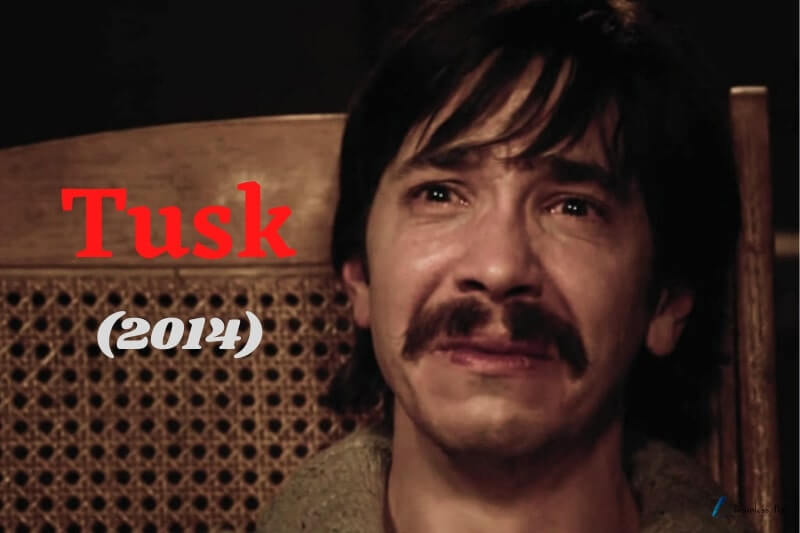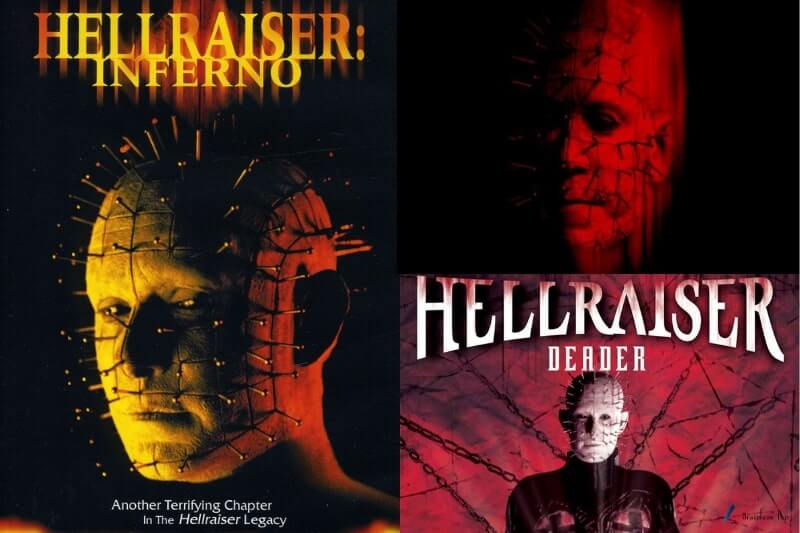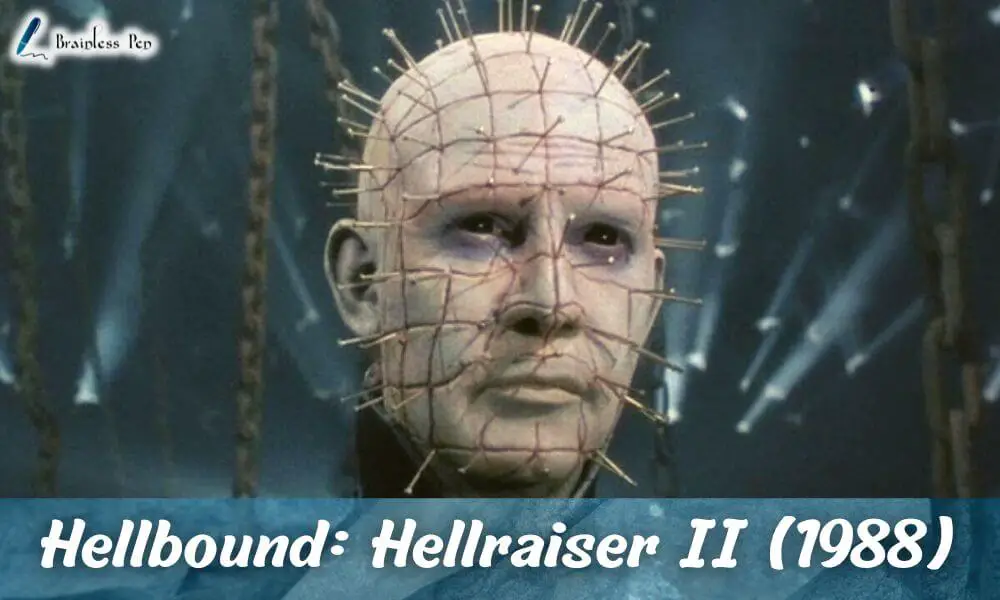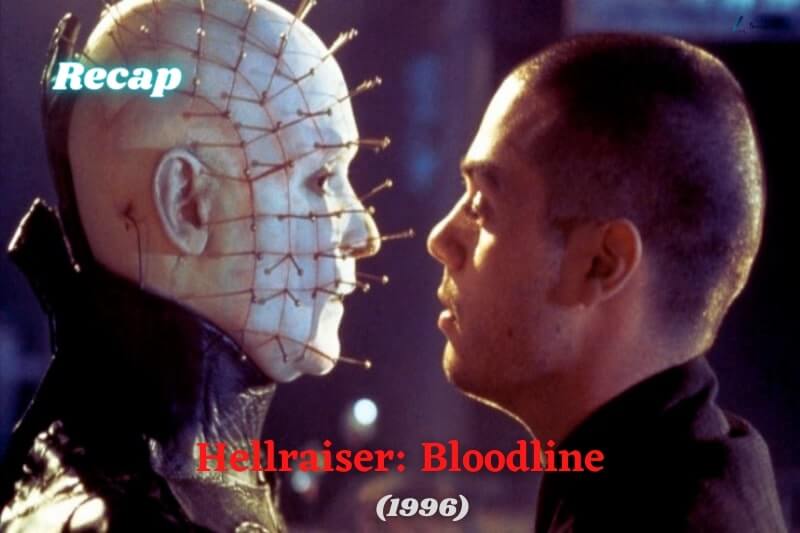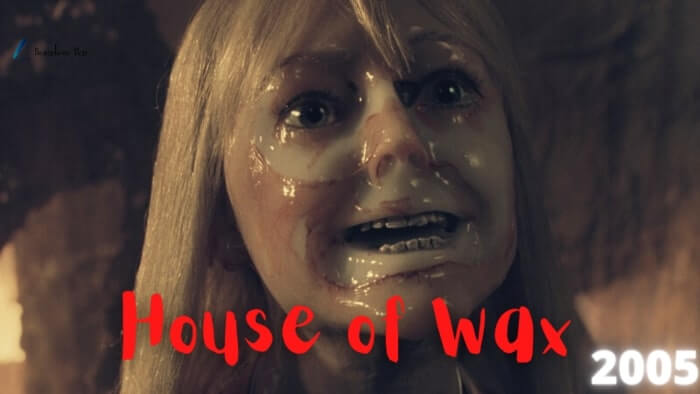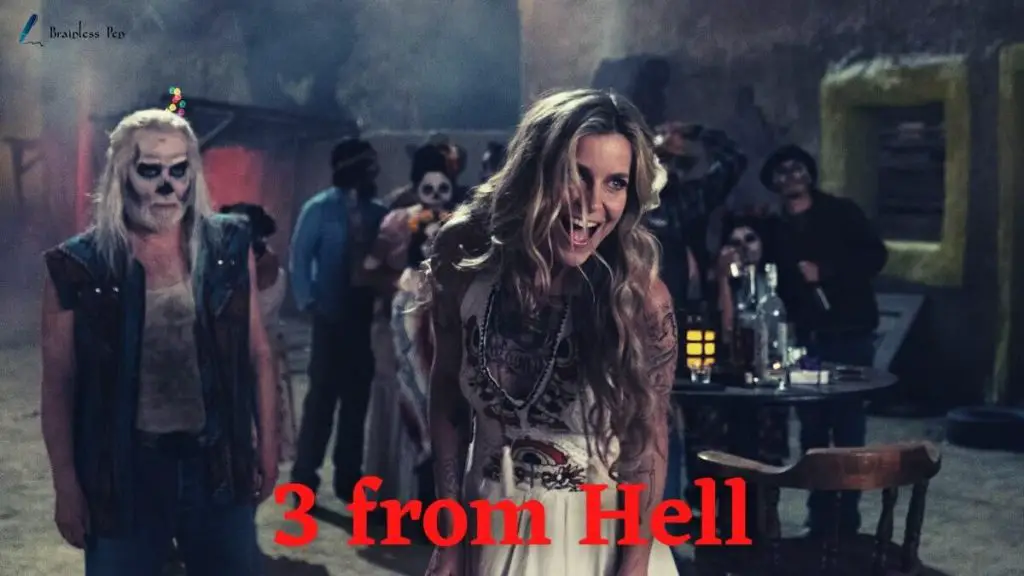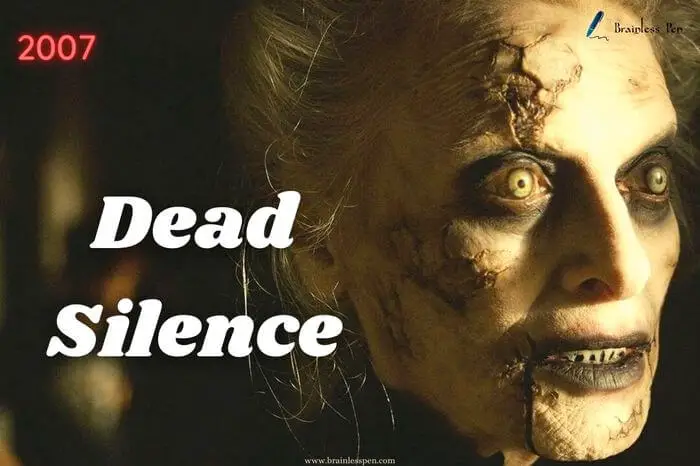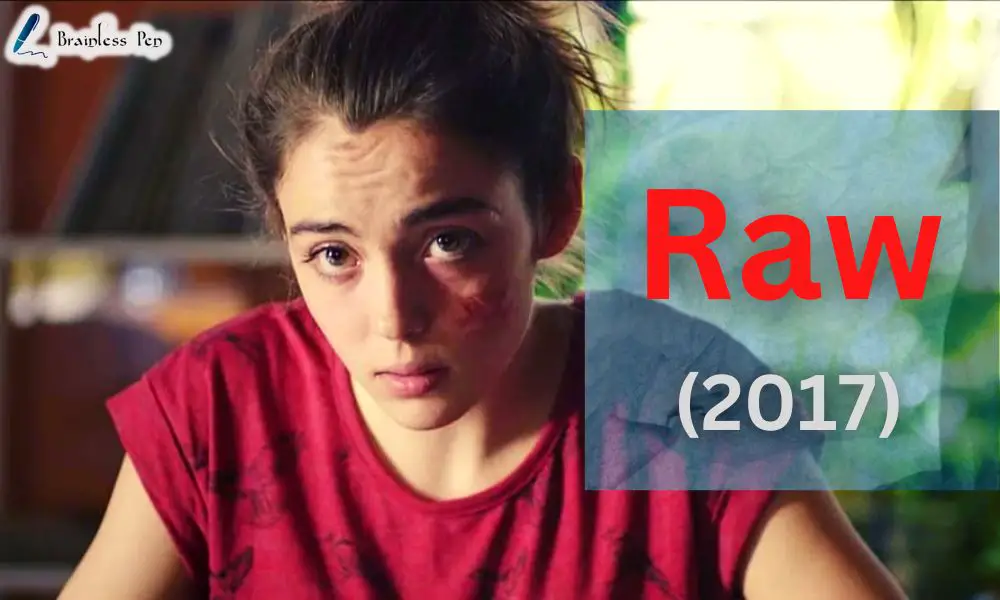After watching Tusk (2014), I was left both fascinated and disturbed by its bizarre blend of dark humor and grotesque horror. The film’s strange plot, shocking transformation, and unsettling ending made it a unique experience. In this article, I’ll break down the plot, explain key twists, and dive into the unanswered questions that make Tusk such an unforgettable horror film.
Tusk Ending Explained & Plot Story in Details
* * * Spoiler Alert – If you haven’t seen the movie yet, turn back now! * * *
The movie starts with two friends, Wallace and Teddy, who host a podcast called The Not-See Party. In their podcast, they collect viral and trending videos and make fun of them. They are doing very well and have a large following.
One of their featured videos is of a Canadian boy accidentally cutting his leg while attempting a stunt. Wallace and Teddy nickname him The Kill Bill Kid, referencing the movie Kill Bill. They make fun of the boy, and at one point, Wallace even says the boy doesn’t need his legs if he can get that much fame. It shows just how cruel Wallace can be.
The following week, Wallace travels to Canada to interview the boy, hoping to create more podcast content and, of course, mock him further. However, upon arriving, Wallace learns that the boy has committed suicide. His viral video led to severe bullying, which eventually pushed him to end his life. This is why I’m always against any form of bullying.
Wallace is upset—not for the boy, but because he lost a potential story and wasted time and money. He goes to a bar, where he finds an intriguing flyer from an old man offering a rent-free room and free meals in exchange for listening to his strange life stories. The man, a former sailor, has many bizarre stories and doesn’t want to die without sharing them. Wallace’s eyes light up—this is exactly what he needs: more stories, more content.
Wallace calls the old man, Howard Howe, and arranges to visit him. He asks two young female employees at a local shop how far the location is, and they inform him it’s about two hours away. Interestingly, one of the girls is Johnny Depp’s daughter, Lily-Rose Depp, and the other is the director’s daughter, Harley Quinn Smith.
Later, Wallace arrives at Howard’s secluded house, where Howard welcomes him from a wheelchair. The house is filled with creepy and bizarre items. Howard offers Wallace a mug of coffee and begins sharing his story.
In 1959, Howard embarked on a voyage to Siberia to find a great white shark. The ship sank after hitting an iceberg, and everyone except Howard perished. He somehow swam to a small island, where, strangely, a walrus saved him from freezing. Howard named the walrus Mr. Tusk. As Howard continues the story, Wallace starts to feel dizzy and realizes, just before passing out, that his coffee was laced with secobarbital.
When Wallace regains consciousness, he’s disoriented and discovers in shock that his leg has been amputated.
Howard explains that Wallace was bitten by a poisonous insect and the venom was moving toward his heart, so the doctor had to amputate to save him. Howard reassures Wallace that he is receiving good medical care with strong medication, but Wallace quickly realizes that something is very wrong.
Later, at the dining table, Wallace angrily confronts Howard, but this is not like one of his podcast episodes—Howard slaps him, forcing him to face reality. Then, Howard reveals his true plan.
Howard shows Wallace a walrus-shaped suit made of human skin. With a few adjustments, it will fit Wallace’s body. But the horrifying truth is that Howard isn’t just planning to dress him in the suit. He intends to transform Wallace into a walrus. Since walruses don’t have developed hands or legs, Howard has already amputated Wallace’s leg. Over time, he will continue to remove other parts of Wallace’s body until his transformation into a walrus is complete.
On the other hand, Teddy starts flirting with Alley by giving her sympathy for Wallace.
Luckily Wallace gets a chance to use his phone. He sends a voice message to Alley with his current condition & location as much as he can describe. But Howard comes in a short time and hits him with a stick in the head and warns him by delivering a famous quote.
Your life as you knew it is over, Mr. Bryton. So if you wish to continue living, you will be a walrus, or you’ll be nothing at all.
– Howard Howe
On the other side, Ally and Teddy head to Canada and inform the police. Initially, the police are reluctant to take action based on just a voice message, but they eventually agree to file a missing person report. The officer tells them that Wallace likely hasn’t left town, so it should be easy to find him quickly. However, Ally and Teddy remain unsatisfied, so the officer gives them the card of a former police detective who specializes in serial killer cases. According to the officer, there are no serial killers in Canada. Maybe he doesn’t know about Robert Pickton.
Howard completed his brutal surgery, dismembering Wallace’s legs, hands, and tongue. He then attached two tusks, crafted from Wallace’s own leg bones, to his face. Finally, Howard completed the transformation by fitting Wallace’s body into a walrus suit made from his own skin. Physically, Wallace had become a walrus.
Howard named him Mr. Tusk.
Read more, The Darkness (2016)
Howard’s next goal was to mentally transform Wallace into a walrus. He treated Wallace as his surrogate Mr. Tusk, the walrus who had saved him years ago. Howard began to recount their shared experiences on the island, but Wallace couldn’t remember anything. He had never been there.
Howard offered Wallace raw fish, the natural diet of a walrus. Initially hesitant, Wallace eventually accepted the food, remembering a phrase he had heard: “a walrus or nothing.” Meanwhile, Teddy and Alley had teamed up with Officer Guy LaPointe, a detective who had been searching for Howard for years.
LaPointe, known as “The First Wife” due to his signature killing style, had identified Howard as the suspect. He believed that Wallace was still alive but had been transformed into a walrus. Following Wallace’s trail, LaPointe and his team arrived at the secluded house.
Howard revealed his true motivation: guilt. He had survived on the island thanks to Mr. Tusk, but when food became scarce, he had resorted to cannibalism. Haunted by his actions, Howard sought redemption through his experiment with Wallace.
Howard challenged Wallace to a fight to the death, both wearing walrus suits. As the battle raged, LaPointe and his team arrived, ready to intervene. However, the outcome was unexpected. Wallace emerged victorious, having reclaimed his humanity.
One year later, Wallace was living in an animal sanctuary. He had adapted to his physical transformation but still retained some human traits. The story concluded with a bittersweet ending, leaving readers to ponder the complexities of identity and survival.
It’s good to cry. It separates us from the animals. Shows you have a soul.
– Ally Leon
Ally reminds her of a quote which she told Wallace once. Teddy & Ally leave the place. Wallace cries as they leave the place.
The movie ends here.
What Happens in Tusk?
When I watched Tusk, I was immediately pulled into a world of dark humor and horror. The story follows Wallace Bryton, a snarky podcaster who travels to Canada for an interview.
Things take a sinister turn when Wallace meets Howard Howe, a reclusive old man with bizarre tales of his past adventures. What starts as an intriguing conversation quickly spirals into a nightmare. Howard drugs Wallace and reveals his twisted obsession with turning him into a walrus, inspired by his own encounter with the majestic creature years ago.
The film shifts from quirky humor to grotesque body horror as Wallace is surgically transformed into a human-walrus hybrid. As the movie progresses, the tension escalates, and I found myself questioning how far this twisted experiment would go. Wallace’s friends, including his girlfriend and co-podcaster, search for him, but by the time they locate him, the transformation is complete—and what they find is both horrifying and heartbreaking.
Why Does Howard Transform Wallace Into a Walrus?
Howard’s motivations are both chilling and deeply unsettling.
As I watched, it became clear that Howard’s obsession with the walrus stems from his traumatic experience at sea, where a walrus saved his life. He grew to admire and even love the creature, but guilt over its death drove him to insanity.
Howard’s desire to recreate that bond, however unnatural, was fueled by his twisted sense of redemption. In his mind, turning Wallace into a walrus was not just an experiment but an opportunity to relive his bond with the animal. What struck me most was how methodical and cold Howard is throughout the process. He shows no remorse or hesitation, which made me feel the true horror of Wallace’s helplessness.
The scene where Howard forces Wallace to “become” the walrus, mentally and physically, left me disturbed and fascinated by the depths of human madness.
What Does the Walrus Suit Symbolize in Tusk?
The walrus suit, to me, represents more than just the physical transformation. It’s a symbol of dehumanization and the loss of identity. When I saw Wallace trapped in that grotesque suit, it felt like a representation of how far a person can fall—both literally and figuratively.
Howard’s obsession with making Wallace into a walrus strips away his humanity, reducing him to an animal for Howard’s own twisted amusement. But the suit also carries a deeper meaning. In my view, it highlights themes of isolation and helplessness, as Wallace is rendered powerless, unable to speak or move like a human.
The walrus suit becomes a prison, both mentally and physically, encapsulating Wallace’s fate. Watching him struggle in that form was one of the most disturbing moments in the movie, and it made me reflect on how quickly one’s sense of self can be stripped away when they’re reduced to nothing more than a plaything for someone else’s obsession.
How Does Tusk Explore Obsession and Loss of Humanity?
As I watched Tusk, it became clear that the film delves deep into the themes of obsession and the gradual loss of humanity. Howard’s obsession with the walrus consumes him to the point where he no longer sees Wallace as a person, but as a means to recreate his twisted fantasy.
What really struck me was how this obsession wasn’t just one-sided—Wallace, too, undergoes a transformation that’s more than physical. At the start of the film, Wallace is arrogant and dismissive, using people as stepping stones for his podcast success. But as he’s slowly turned into a walrus, he loses not just his human form, but also his pride, his dignity, and his very sense of self.
The film seems to suggest that when obsession takes over, whether it’s Howard’s fixation on the walrus or Wallace’s ego, it strips away what makes us human. Watching Wallace succumb to his fate, it felt like he was being punished for his own self-obsession—reduced to an animal, both physically and emotionally.
Why Is Wallace’s Transformation So Disturbing?
Wallace’s transformation into a walrus is one of the most disturbing elements of Tusk. As I witnessed each horrifying stage of his transformation, I couldn’t shake the feeling of helplessness that enveloped the entire scene. What makes it so unsettling is the slow, methodical process by which Howard strips away Wallace’s humanity.
The surgery scenes, though grotesque, are not the only source of horror. For me, the real terror lies in the psychological impact of Wallace’s transformation. His screams, his desperation, and his eventual acceptance of his fate made it clear that this wasn’t just body horror—it was the destruction of a person’s soul. The fact that Wallace can’t communicate, can’t express his agony, and is forced to live as an animal creates a sense of despair that lingers long after the movie ends.
It wasn’t just about the physical mutilation; it was about watching a person’s identity being erased in the most terrifying way possible.
What Does the Tusk Ending Really Mean?
Tusk movie ending left me with a haunting sense of dread, and I couldn’t stop thinking about its meaning. Wallace is left permanently transformed into a walrus, living in an animal sanctuary with no hope of returning to his human life.
To me, Tusk ending explanation speaks volumes about the permanence of trauma and how some experiences change you forever. As I see it, Wallace’s fate is a tragic metaphor for being trapped by your past choices and the horrors others impose on you. The final scene, where Wallace sheds a tear as his girlfriend tries to connect with him, is incredibly powerful. It made me question whether Wallace still holds on to a shred of his humanity, or if he’s fully succumbed to the walrus identity.
The film doesn’t give clear answers, and that ambiguity is what makes the ending so effective. It left me with a lingering feeling that Wallace’s fate is a reminder of how fragile our sense of self truly is.
Is There a Deeper Meaning Behind the Unanswered Questions?
What makes Tusk particularly intriguing to me are the unanswered questions that linger after the movie ends. One of the biggest questions I had was whether Wallace could ever regain his humanity, even mentally. Is he fully trapped in his walrus identity, or does a part of his human consciousness still exist?
The tear he sheds in the final scene suggests there’s something left of the man he once was, but the film never confirms it. I also found myself wondering about Howard’s true intentions—was he trying to relive his bond with the walrus, or was this all about power and control? There’s a deeper layer of psychological horror in Tusk that deals with identity, transformation, and what it means to lose control of your own body and mind.
These unanswered questions left me thinking long after the credits rolled, and I believe they’re a big part of what makes the film so haunting. The ambiguity invites viewers like me to come up with their own interpretations, which keeps the story alive in our minds.
How Is Tusk Connected to a True Story?
As bizarre as Tusk is, I was surprised to learn that the movie was loosely inspired by a true story. Kevin Smith, the director, got the idea for the film from a real-life prank ad that offered free lodging to anyone willing to dress as a walrus for a few hours each day.
The ad itself was a hoax, but the idea of a human-walrus transformation sparked Smith’s imagination, leading to this disturbing film. I think what makes this connection to the real world even more unsettling is that it shows how absurd ideas can sometimes tap into our deepest fears. The idea of being dehumanized, transformed into something unrecognizable, and losing control over your body isn’t just fantasy—it’s a primal fear we all have to some extent.
While the movie takes the concept to an extreme, knowing that it was inspired by a real, albeit strange, event adds a layer of eerie realism to Tusk that I couldn’t shake.
Does Wallace Retain His Humanity at the End of Tusk?
At the end of Tusk, one unanswered question kept haunting me—does Wallace still have any part of his human consciousness left, or has he fully embraced his new life as a walrus? The final scene shows Wallace, now a full walrus, living in an animal sanctuary.
When his girlfriend visits him, there’s a brief but powerful moment where he sheds a single tear. This subtle detail made me wonder whether Wallace is still aware of his human past, trapped in a body he can’t escape, or if he has mentally succumbed to his new identity as a walrus. The film doesn’t provide a definitive answer, leaving this crucial question open to interpretation.
Personal Thought: For me, this lingering uncertainty added another layer of horror to the film. The tear felt like a small, heartbreaking reminder that Wallace might still remember who he once was, suffering silently in his new form. It left me thinking—what’s worse: being transformed into something unrecognizable or being aware of it but powerless to change? This unanswered question made the ending even more tragic and haunting, staying with me long after the credits rolled.
Conclusion
Tusk is a movie that leaves a lasting impression with its surreal storyline and unsettling themes. From Wallace’s horrifying transformation to the unanswered questions about his humanity, the film challenges the boundaries of body horror and psychological horror. For me, the film’s eerie ending and the haunting ambiguity are what truly make Tusk a disturbing and unforgettable experience.
Official Synopsis
A chilling horror tale about the perils of storytelling, Tusk follows a brash American podcaster as he braves the Canadian wilds to interview an old man with an incredible past—only to discover the man’s dark secret involves a walrus.
Source: Tusk – A24
Summary
Original Title Tusk
Genre Body Horror/ Comedy
Runtime 01hr 42min
Original Language English
Written & directed by Kevin Smith
Tagline Let me tell you a story…
Release date September 19, 2014 (USA)
Origin Country United States
Cast of Characters
| Actor/Actress Name | Character’s Name |
|---|---|
| Justin Long | Wallace |
| Michael Parks | Howard |
| Haley Joel Osment | Teddy |
| Genesis Rodriguez | Ally |

